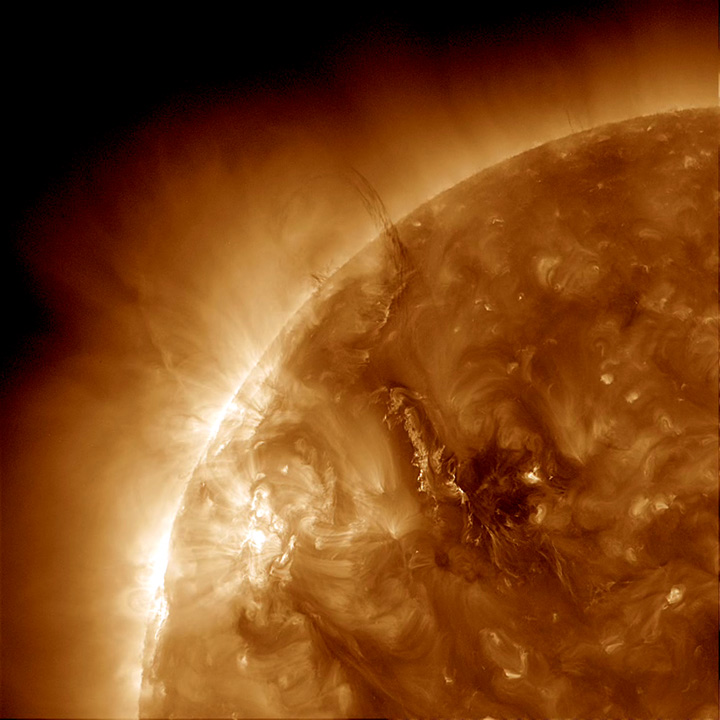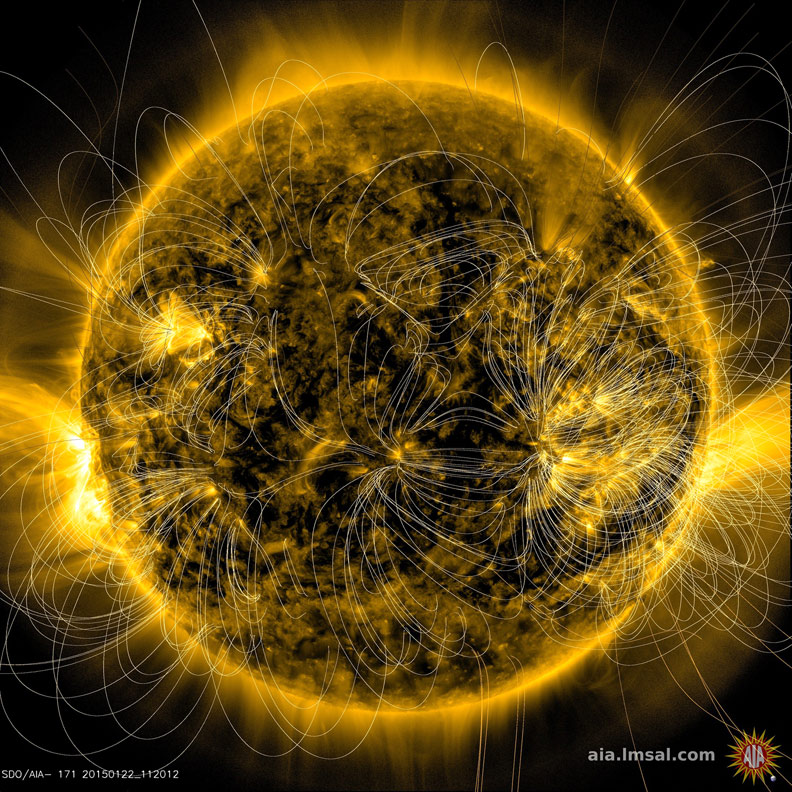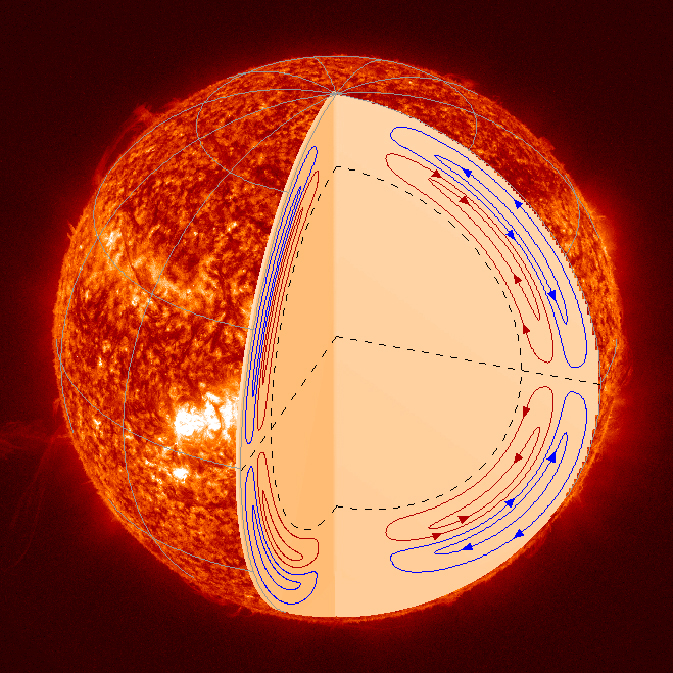Celestial Sound Waves Reveal Surprising Solar Changes

The celestial music released from the sun suggests that its outer layer has grown weaker over the years, according to new research from the United Kingdom.
The sun releases sound waves, and like a musical instrument, the structure of the sun informs the way the sound waves are shaped. Scientists can study the sun's oscillations by listening to the frequencies that make up the sound signal, thereby learning something about the object making the sound. Because the waves are generated by and pass through different sections of the sun, the wave frequency reveals clues about the inside of the sun and allows scientists to chart changes in the star's life.
Scientists from the Birmingham Solar-Oscillations Network at the University of Birmingham, in the United Kingdom, used the sun's sound waves to determine that one of its outermost layers may be growing thinner. [How the Sun's Magnetic Field Works (Infographic)]
"The sun is the only star on which we can get this level of detail," Yvonne Elsworth, a researcher working on the project at the University of Birmingham, told Space.com in an email. "Other stars do show activity cycles, and if we can understand the processes in the sun, we will be able to extend the ideas to other stars."
"The study of the sun is crucial to scientists' understanding of the cosmos because it is the closest star to our planet, and learning about its life processes reveals more about the dynamics of stars many light-years away," she added.
Elsworth presented the new research at the National Astronomy Meeting at the University of Hull in the United Kingdom on July 4.
Get the Space.com Newsletter
Breaking space news, the latest updates on rocket launches, skywatching events and more!

Tracking the waves
The sun, like Earth, has different layers. One of the outermost layers is a few hundred kilometers wide, according to NASA, and is made up of plasma. The sun's plasma is a tremendously hot mix of separated electrons and ions, which means they are charged and naturally create magnetic fields. Plasma churns and pulls in different directions around the sun, and the enormous heat produced by the nuclear fusion at the core plays along these currents to create magnetic fields.
So how does the sun produce sound? The movement of the plasma creates sound waves. Patches on the surface of the sun oscillate up and down in 5-minute motions, NASA officials said in a reference page. These sound waves travel radially, meaning inward and outward. The sound waves remain inside the sun, because the cavity of the star is constrained by the properties of its surface, thereby sending the waves downward. Then, a change of direction caused by the wave's increased speed toward the middle of the sun makes it bounce back up toward the surface. When scientists study the frequency of these waves, they can tell a lot about the inside of the star, as well as learn about its magnetic field. This is called helioseismology, and as the name suggests, it is similar to the concept of studying subterranean waves on Earth to predict earthquakes.
Solar sound waves are much too low for humans to hear, but they can be detected visually on the sun's surface and analyzed (as in this explanatory video). Visible features are caused by sound waves deep inside the sun's core, and they are simultaneously shaped by the activity near the solar surface.
Because these features are influenced by both the sun's core and the area near its surface, studying the features gives scientists a big picture look at the sun, researchers said in a statement about the new work. This allows them to learn about the changing physical conditions of the sun, either at a given moment or over many years.

Evidence of thinning
In the new research, the scientists found that the sun's outer layers were more sensitive to medium and higher frequencies, indicating that some areas of the solar surface have weakened, the researchers said.
"The acoustic properties have as such failed to re-set to their pre-1994 state," the researchers wrote in a paper detailing their work, which was released in the journal Monthly Notices of the Royal Astronomical Society in May.
The study tracked changes in the sun by looking at previous solar cycles of change, such as Cycle 22 which lasted from the years 1986 to 1996, and found that the oscillation frequencies were confined to a thinner layer than those previous cycles. That means it has been more than 20 years since scientists have observed such a thin solar layer. Factoring in observations from earlier technologies, the data suggests the sun has not had an outer layer this thin since over 100 years ago.
Therefore, researchers of the BiSON study believe this weakening phenomenon is an overall thinning of the layer, rather than just a normal part of the sun's 11-year cycle of activity.
When a solar cycle ends, it is called a solar minimum. The sun is approaching the end of Cycle 24 now, and will reach it around 2019. By comparing findings of the current period of minimum activity with those of previous cycles, scientists can paint a picture of the changes in the sun over a span of decades, and sometimes centuries.
Follow Doris Elin Salazar on Twitter @salazar_elin. Follow us @Spacedotcom, Facebook and Google+. Original article on Space.com.
Join our Space Forums to keep talking space on the latest missions, night sky and more! And if you have a news tip, correction or comment, let us know at: community@space.com.

Doris is a science journalist and Space.com contributor. She received a B.A. in Sociology and Communications at Fordham University in New York City. Her first work was published in collaboration with London Mining Network, where her love of science writing was born. Her passion for astronomy started as a kid when she helped her sister build a model solar system in the Bronx. She got her first shot at astronomy writing as a Space.com editorial intern and continues to write about all things cosmic for the website. Doris has also written about microscopic plant life for Scientific American’s website and about whale calls for their print magazine. She has also written about ancient humans for Inverse, with stories ranging from how to recreate Pompeii’s cuisine to how to map the Polynesian expansion through genomics. She currently shares her home with two rabbits. Follow her on twitter at @salazar_elin.









